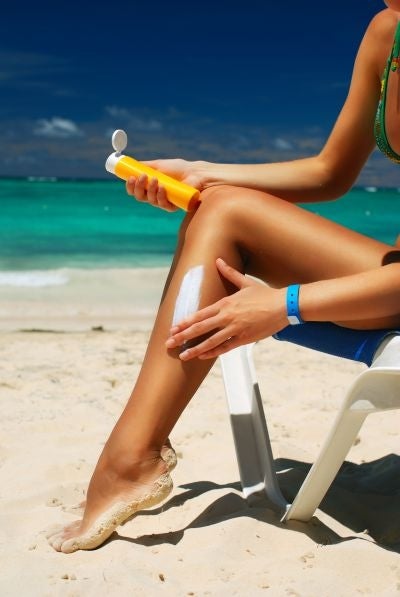Last week, the Environmental Working Group (EWG), a US-based advocacy group working to expose hazards to health and the environment, released its yearly list of the safest and most effective sunscreens, lip balms, and moisturizers with SPF.
According to the report, the bulk of sunscreens are "filled with problematic ingredients, unsubstantiated marketing claims and lackluster protection." The group claims that three out of five sunscreens offer inadequate protection against UVA rays, which are associated with skin cancer and wrinkles.
EWG recommends that consumers skip products containing retinyl palmitate, a vitamin A derivative, because animal studies suggest it reacts with the sun and increases risk of skin cancer. Also, avoid using products containing oxybenzone, a sun-blocking agent that is believed to bleach coral reefs and is a known endocrine disruptor and can cause allergic reactions.
In response to the rankings, the American Academy of Dermatology stated that all sunscreen ingredients, including retinyl palmitate and oxybenzone, are safe.
The EWG's comprehensive sunscreen guide includes a list of 129 products offering effective and safe sun protection as well as those to avoid.
Top-rated sunscreens contained zinc oxide and titanium dioxide, considered highly effective against sun damage. Because they block the sun, sunscreens containing those ingredients leave a whitish residue on the skin. Nano-sized particles are often used in the formulations to lessen the pasty effect. But despite manufacturers' claims that the particles aren't absorbed by the body, the jury is still out on their potentially adverse health effects.
While recommending nano sunscreens, the EWG also advises using them only if they provide an acceptable advantage for sun protection.
The EWG also recommends avoiding sunscreens with bug repellent; staying out of the sun during peak hours (between 10 a.m. and 4 p.m.); dressing appropriately to reduce exposure, such as wearing wide brimmed hats and anti-UV sunglasses; and avoiding sunscreen in spray and powder forms, which could damage lungs over time.
The EWG's list of the best sunscreens with broad-spectrum protection includes: Alba Botanica Sun: Mineral Sunscreen, Fragrance-Free, SPF 30; Aubrey Organics Natural Sun Unscented Sensitive Skin/Children Sunscreen, SPF 30+; Aveeno Baby Natural Protection Mineral Block Face Stick, SPF 50; Badger Sunscreen, Unscented, SPF 30+, California Baby No Frangrance Sunscreen Lotion, SPF30+; Climb On! Mineral Sunblock SPF 30; Karen's Botanicals Simple Sunblock Lotion, Unscented, SPF 30; Loving Naturals Sunscreen, SPF 30+; Sun Putty Face, SPF 30; Vanicream Sunscreen for Sensitive Skin, SPF 30.
American consumer advocacy magazine Consumer Reports also just released its top sunscreen picks. Hiring an outside lab, the magazine tested 22 sprays, creams, and lotions to determine whether the products met their labeled sun protection factor, but also rated the products on the basis of smell and texture. Some of their top-rated sunscreens are Banana Boat Sport Performance, SPF 30; Coppertone Sport Ultra Sweatproof SPF 30; Up & Up Sport, SPF 30 (spray); and No-Ad with Aloe and Vitamin E, SPF 45 (lotion).
Access the full EWG report: http://breakingnews.ewg.org/2011sunscreen
Watch a video with tips on sunscreen application: http://www.howcast.com/videos/20913-How-To-Apply-Sunscreen?p=568

Join our commenting forum
Join thought-provoking conversations, follow other Independent readers and see their replies
Comments